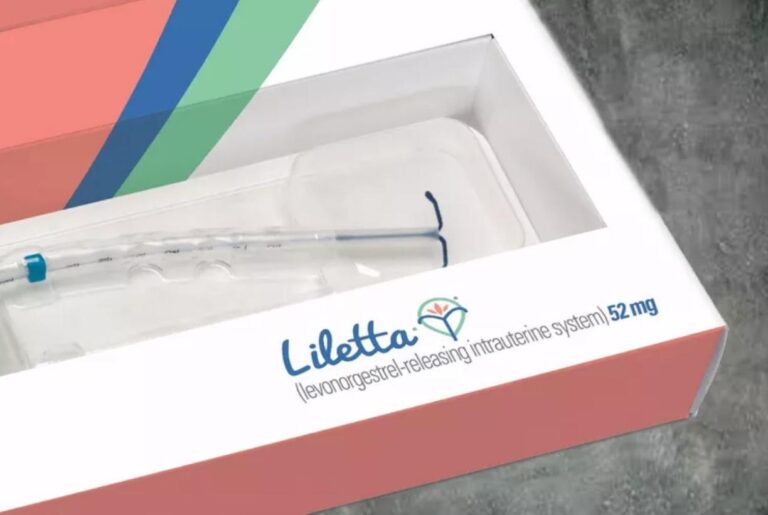Copper intrauterine device (IUD) is a non-hormonal birth control placed into the uterus by the doctor. It is a T-shaped device made from plastic and wrapped in copper with two strings attached. Copper IUD back pain is one of the side effects of using this device. Follow along to find out more about this contraceptive device.
About Copper IUD
Simply put, Paragard is the only brand that manufactures copper IUDs. The copper coating will slowly release copper ions inside the uterus. It will keep sperm from meeting or fertilizing an egg by creating a toxic environment. Also, the release of copper ions changes the uterus lining and the makeup of cervical mucus.
Copper IUD doesn’t use hormones, so women who use this device still get their period. In contrast, hormonal IUDs make periods come less often or even stop totally. Using Paragrad is over 99% effective in preventing pregnancy, and it can last 10 to 12 years.
Copper IUD will work by itself to prevent pregnancy and has little margin of error after being placed inside the uterus. These two are the reasons why the device can work wonderfully. This device might be a good option for emergency birth control in the future.
According to the Cleveland Clinic, women who choose to get a copper IUD in five days of unprotected sex will have a below 0.1% probability of getting pregnant. Despite that, IUDs can’t protect you from sexually transmitted diseases (STI), including syphilis, genital herpes, HIV/AIDS, and HPV.
Paragard copper IUD insertion can be done anytime during a normal menstrual cycle. Before inserting the device, your healthcare provider will assess your overall health and administer a pelvic exam. You may also have to do a pregnancy test and STI screening.
5 Side Effects of Using Copper IUD
Copper IUD back pain is one of the side effects of wearing the Paragard contraception. Some side effects can be bothersome but still manageable, but the rest can be more dangerous. Here are the 5 copper IUD side effects and how to deal with them.
1. Back Pain
After inserting a copper IUD into the uterus, you may experience back pain as a side effect. You can treat back pain using over-the-counter or OTC pain relievers. The medication options include acetaminophen (Tylenol), ibuprofen (Advil, Motrin), and naproxen (Aleve). You can also opt to use a heating pad to relieve the pain.
The back pain should improve after some time treating it. However, the back pain side effect could also be a symptom of ectopic pregnancy when using the copper IUD.
2. Ectopic Pregnancy
The start of ectopic pregnancy happens on the outside of your uterus. Some symptoms of this type of pregnancy include lower copper IUD back pain, vaginal bleeding, and pain only on one side of the body. If you are indeed experiencing these symptoms while using a copper IUD, promptly contact your healthcare provider.
The purpose of using a copper IUD is to prevent pregnancy. However, when you end up getting pregnant when using one, there’s a higher chance for it to be ectopic. Moreover, this side effect can turn out to be dangerous and life-threatening, as well as affecting your future fertility.
3. Increased Cramping and Heavier Periods
It is common for people to experience cramping during and after inserting the copper IUD. Some people can swiftly resolve this side effect, but it may last a few weeks for others. Notably, Paragard copper IUD may also cause even more cramping alongside heavier and lengthy periods.
When the change in period happened, many women decided to stop using copper IUDs in clinical trials. Fortunately, these side effects often show signs of improving after 3 to 6 months.
Similar to copper IUD back pain, you can treat increased cramping and heavier periods using OTC drugs as painkillers. Another alternative is to use a heating pad and place it on your lower belly.
4. Breakthrough Bleeding or Spotting
Besides heavier and lengthy periods, you may also experience breakthrough bleeding or spotting due to using a copper IUD. If this side effect is not a serious complication, it would improve between 3 to 6 months.
When this side effect is followed by pain or fever, it may turn out to be a sign of serious copper IUD complications. These complications are infection, ectopic pregnancy, and IUD movement. You have to contact your doctor right away to get immediate treatment.
5. IUD Movement or Expulsion
The IUD movement or expulsion side effect is uncommon, but it still might occur when using a Paragard copper IUD. This side effect happens when the device is driven out either partially or entirely from inside the uterus. There’s also a risk of the device embedded or stuck in the uterus wall that may require surgery to remove.
The copper IUD might move to other body areas near your uterus, which can cause bleeding, pain, or no symptoms whatsoever. You must check your copper IUD regularly by inspecting the two thin threads. These two threads should be out of your cervix to ensure the device remains in the correct place.
Contact your healthcare provider when you notice whether the threads are shorter, longer, or not felt at all. You can ask them to check the copper IUD’s position, and they can administer the necessary treatment to resolve this complication.
Who Should Not Use Copper IUD?
After knowing about copper IUD back pain and the other side effects, let’s find out for whom copper IUD birth control is inadvisable. Some of these factors can be the cause why certain people are not recommended to use copper IUDs.
- Abnormally shaped uterus.
- Active pelvic infections.
- Cervical or uterine cancer.
- Vaginal bleeding.
- Have not removed the pre-existing IUD.
- Susceptible to infection.
- Allergic to copper or other IUD components.
- Wilson’s disease.
Do You Understand About Copper IUD Back Pain and the Side Effects?
Experiencing copper IUD back pain might not be the most pleasant thing after inserting the contraception. Always check your body conditions from time to time. Therefore, when the side effects happen, you can resolve them quickly with the help of your doctor and other healthcare providers.



